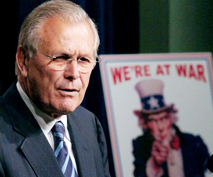Source: Foreign Policy in Focus
Germany towers over Europe like a colossus. Its economy is the biggest in the European Union, accounting for 20 percent of the EU’s gross domestic product. While most of Europe’s economies are stagnating, Germany’s will have grown by some 2.9 percent in 2011. It boasts the lowest unemployment rate, 5.5 percent, of Europe’s major economies, compared to those of France (9.5 percent), the United Kingdom (8.3 percent), and Italy (8.1 percent).
In many ways, Germany is like Japan. Both countries were forced to give up armed expansion during the Second World War, only to have the national energy channeled into building formidable economies. But whereas Japan faltered in the 1990s, Germany has steadily plowed ahead, becoming the world’s biggest exporter from 1992 to 2009, replaced in first place by China only in 2010. read more




